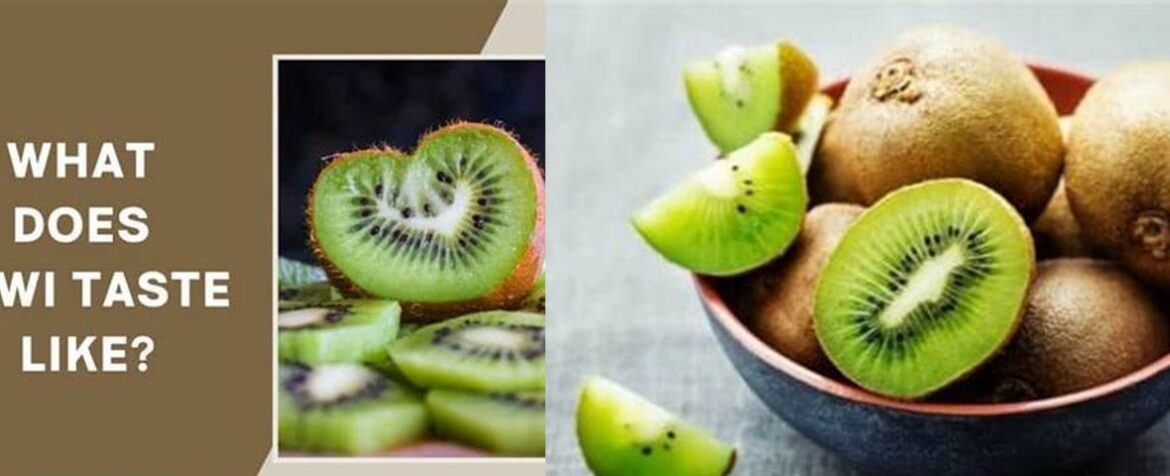Have you ever wondered what a kiwi tastes like? Prepare to be amazed as we embark on a journey to uncover the unique flavor profile of this delightful fruit. From its symphony of sweet and sour notes to its refreshing burst, the kiwi is truly a culinary gem. Whether you’re a curious foodie or simply looking to add a new twist to your recipes, this blog post will reveal the secrets behind the tantalizing taste of kiwi. Get ready to indulge your taste buds and explore the endless possibilities that this little fruit has to offer.
Kiwi’s Unique Flavor Profile: A Symphony of Sweet, Sour, and Refreshing
In the realm of fruits, the kiwi stands out as a true culinary enigma, captivating taste buds with its distinctive blend of flavors. This emerald-hued fruit, native to China, has embarked on a global culinary journey, gracing fruit bowls and dessert plates around the world. Its unique flavor profile, a harmonious union of sweet, sour, and refreshing notes, has earned it a dedicated following among fruit enthusiasts.
Unveiling the Flavor Nuances of Kiwis
The kiwi’s flavor is a symphony of subtle nuances, varying depending on the type and ripeness of the fruit. Fuzzy kiwis, with their dull brown, fuzzy skin and vibrant green insides, offer a sweet and tangy flavor experience. Their slightly acidic bite adds a refreshing zest that awakens the palate.
Kiwi berries, smaller cousins of the fuzzy kiwi, share a similar flavor profile, albeit with a milder sweetness and a texture reminiscent of grapes. Their compact size makes them perfect for snacking or adding a pop of flavor to salads and yogurt parfaits.
Yellow kiwis, also known as golden kiwis, boast a unique appearance with bronze-colored skin and intense yellow flesh. Their flavor is a delightful blend of sweetness and aromatics, with a hint of tropical undertones. The yellow kiwi’s distinct flavor profile makes it a popular choice for desserts and fruit salads.
Exploring the Culinary Versatility of Kiwis
Kiwis, with their versatile nature, transcend the boundaries of raw consumption, inviting culinary experimentation and creative applications. Their unique flavor profile lends itself beautifully to both sweet and savory dishes, making them a versatile addition to any kitchen pantry.
1. Culinary Canvas: The Raw Kiwi Experience
At their peak of ripeness, kiwis are best enjoyed in their natural, unadulterated form. Sliced, diced, or halved, raw kiwis offer a refreshing and nutritious snack that retains their full flavor, texture, and vitamin content. Their vibrant green flesh adds a pop of color and a burst of flavor to fruit salads, yogurt bowls, and smoothies.
2. Culinary Alchemy: Kiwis in Cooked Delights
Kiwis’ culinary versatility extends beyond their raw form, inviting creative exploration in the realm of cooked dishes. Their tangy sweetness complements marinades, adding a unique flavor dimension to meats, poultry, and seafood. The kiwi’s ability to tenderize meat makes it an ideal ingredient for slow-cooked stews and braises.
In the realm of desserts, kiwis seamlessly blend their flavors with various ingredients, creating delectable treats. Kiwi cobblers, with their flaky crusts and tangy-sweet filling, offer a delightful balance of flavors and textures. Kiwi tarts, adorned with vibrant green kiwi slices, provide a refreshing twist on a classic dessert.
Beyond Taste: The Health Benefits of Kiwis
Kiwis are not merely味蕾的享受; they also pack a nutritional punch that contributes to overall well-being.
1. Vitamin C Powerhouse:
Kiwis are a rich source of vitamin C, an essential nutrient that plays a crucial role in immune system function, collagen production, and antioxidant defense. Consuming kiwis regularly can help boost the body’s natural defenses against infections and promote overall health.
2. Digestive Aid:
Kiwis contain actinidin, an enzyme known for its digestive properties. This enzyme aids in the breakdown of proteins, facilitating digestion and reducing the risk of indigestion and bloating.
3. Heart Health Ally:
The antioxidants present in kiwis, such as vitamin C and E, contribute to heart health by reducing oxidative stress and inflammation. Additionally, kiwis are a good source of potassium, a mineral that helps regulate blood pressure and maintain a healthy heart rhythm.
4. Sleep Enhancer:
Kiwis contain serotonin, a neurotransmitter associated with relaxation and sleep. Consuming kiwis before bedtime may promote relaxation and improve sleep quality, particularly for individuals experiencing sleep disturbances.
Conclusion: A Culinary Gem with Endless Possibilities
The kiwi, with its unique flavor profile and impressive nutritional profile, is a true culinary gem. Its versatility extends from refreshing raw snacks to delectable cooked dishes, making it a welcome addition to any kitchen. Whether enjoyed alone or incorporated into culinary creations, kiwis offer a burst of flavor and a wealth of health benefits. As you embark on your next culinary adventure, consider incorporating this unique fruit into your meals and discover the endless possibilities it holds.
FAQ about What Does Kiwi Taste Like
Q: What does a kiwi taste like?
A: Kiwi has a unique flavor profile that combines sweet, sour, and refreshing notes.
Q: Does the taste of kiwi vary depending on the type of fruit?
A: Yes, the taste of kiwi can vary depending on the type of fruit. Fuzzy kiwis have a sweet and tangy flavor, while kiwi berries have a milder sweetness.
Q: Are fuzzy kiwis more acidic compared to kiwi berries?
A: Yes, fuzzy kiwis have a slightly acidic bite that adds a refreshing zest to their flavor, while kiwi berries have a milder sweetness.
Q: What is the texture of kiwi berries?
A: Kiwi berries have a texture reminiscent of grapes.
Q: Where is kiwi native to?
A: Kiwi is native to China.
Q: Is kiwi popular worldwide?
A: Yes, kiwi has embarked on a global culinary journey and is now enjoyed in fruit bowls and desserts around the world.


